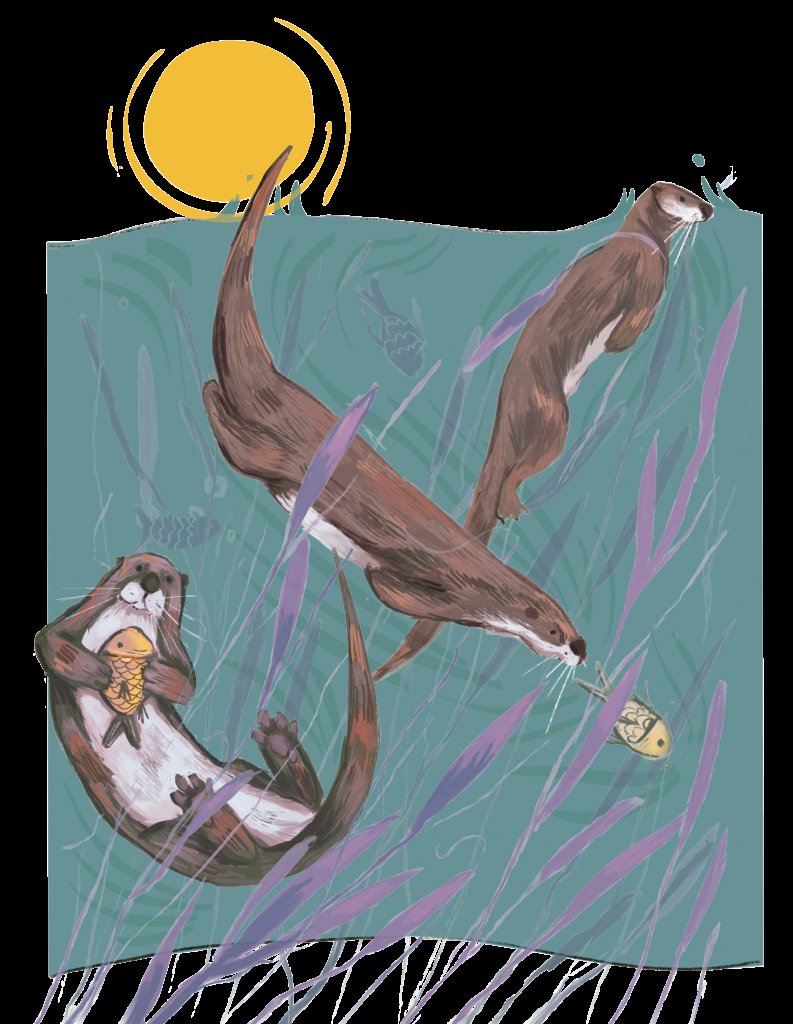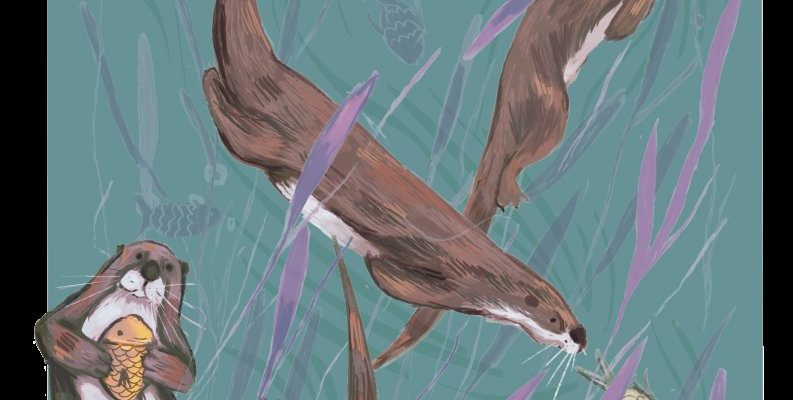
Imagine being a tiny, weasel-like animal that slowly adapts to life in the water. That’s essentially what otters have done over time. The evolutionary history of the otter is a tale of adaptation, survival, and diverse species thriving in various habitats. Let’s dive into this captivating journey together and uncover how these charismatic aquatic mammals came to be.
Otter Origins: A Look Back in Time
To understand how otters evolved, we need to travel way back to the early ancestors of modern otters. Most scientists believe otters belong to the family Mustelidae, which also includes weasels, badgers, and ferrets. The earliest ancestors of this family appeared around 30 million years ago. They were land-dwelling mammals that hunted small animals and scavenged for food.
As the environment transformed, some of these creatures began adapting to life near water sources. Over time, they developed features that made them better suited for an aquatic lifestyle. This included changes in their limbs for swimming, a streamlined body shape, and thick fur for insulation. Imagine these animals slowly becoming comfortable in the water, much like how a child learns to swim—bit by bit, they become more adept at navigating their new home.
The First True Otters
The first true otters, known as Lutrinae, appeared around 12 million years ago. These otters looked quite different from the ones we know today and came in various species. Some of them adapted to marine environments, while others stayed in freshwater habitats. The diversity among these early otters set the stage for the wide variety of species we have today.
One of the standout characteristics of these otters was their ability to dive and hunt. They developed specialized adaptations, like webbed feet and a more elongated body, to help them swim efficiently. As they explored their environments, otters began to use tools, like using rocks to crack open shellfish. This behavior showcased their intelligence and resourcefulness, paving the way for future generations of otters.
The Great Otter Diversification
As time went on, otters began to spread across different parts of the world. About 5 million years ago, a significant diversification occurred, giving rise to various species of otters we recognize today. Each species adapted to its specific environment, whether it was rivers, lakes, or coastal waters.
One of the most fascinating aspects of otters is how different species evolved unique traits to thrive in their habitats. For instance, the sea otter has incredibly thick fur to keep warm in cold ocean waters, while the North American river otter enjoys a more streamlined body that allows for speed and agility.
These adaptations allowed otters to occupy various ecological niches. For example, the Asian small-clawed otter is known for its dexterity, using its sensitive paws to search for food in muddy riverbeds. This specialization is a testament to the evolutionary pressures that shaped these animals into the playful and efficient hunters we see today.
Defining Moments: Climate Changes and Habitat Shifts
Throughout their history, otters faced several environmental changes that influenced their evolution. Ice ages, for example, drastically altered habitats and food availability. Some species thrived, while others struggled to adapt to the changing conditions.
In many cases, otters migrated to find suitable environments, sometimes leading to the isolation of certain populations. This isolation often resulted in the development of distinct traits and behaviors, which eventually contributed to the rich diversity of otters we see across the globe today. It’s like how different neighborhoods in a city can have unique vibes—each adapting to the environment around them.
Modern Otters: A Snapshot of Current Species
Today, there are 13 species of otters around the world, each with its own set of unique characteristics. For example, the giant river otter is the largest of the bunch, reaching lengths of over six feet! These charismatic creatures live in groups and display highly social behaviors, showcasing the complexity of their social structures.
In contrast, the European otter prefers solitude and is known for its stealthy hunting techniques. These different lifestyles reflect how otters have evolved to thrive in their respective ecosystems, showcasing adaptability and resourcefulness. Whether they’re working in teams or going it alone, otters have mastered the art of survival.
Conservation Challenges
While otters have had a successful evolutionary journey, they now face significant challenges due to human activities. Habitat loss, pollution, and hunting have endangered many otter species worldwide. Localized populations can become vulnerable, threatening their genetic diversity.
Conservation efforts are critical to ensuring the survival of these beloved animals. Many organizations work tirelessly to protect otters and their habitats, emphasizing the importance of clean waterways and sustainable practices. By understanding their evolutionary history, we can appreciate the complexity of otters and the importance of preserving their existence.
The Importance of Understanding Otter Evolution
So, why does exploring the evolutionary history of the otter matter? Understanding their past helps us appreciate the intricate connections between species, environments, and the impact of human activities. It also highlights the importance of biodiversity and the need for conservation efforts.
Otters play a vital role in their ecosystems, helping to maintain healthy aquatic environments. By controlling prey populations and even supporting plant life, they contribute to the balance of their habitats. Protecting otters means preserving the health of the ecosystems they inhabit, which ultimately benefits us all.
Embracing their Legacy
As we continue to learn about the evolutionary history of otters, we can find inspiration in their adaptability and resilience. Let’s celebrate these fascinating creatures not just for their charm but also for their role as indicators of environmental health. Every time you see an otter frolicking in the water, remember it’s a living testament to millions of years of evolution.
In conclusion, the journey of otters from their distant ancestors to the playful beings we love today is a testament to nature’s ability to adapt and thrive. By understanding their history, we can appreciate the beauty of our natural world and become advocates for its preservation. Together, let’s ensure that future generations of otters can continue to slide down riverbanks and delight us all.

